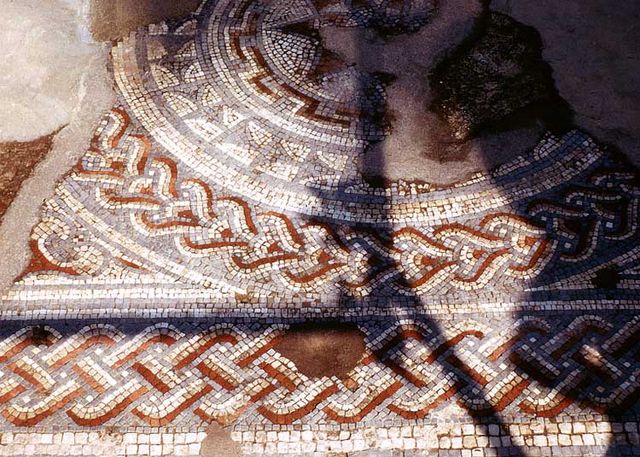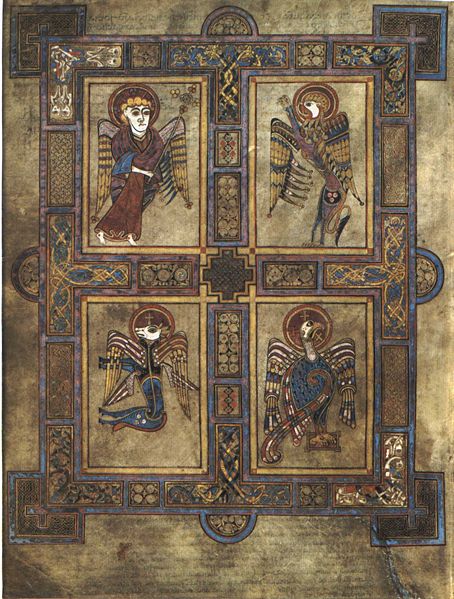Celtic knots are a variety of knots and stylized graphical representations of knots used for decoration, used extensively in the Celtic style of Insular art. These knots are most known for their adaptation for use in the ornamentation of Christian monuments and manuscripts, such as the 8th-century St. Teilo Gospels, the Book of Kells and the Lindisfarne Gospels. Most are endless knots, and many are varieties of basket weave knots.
Stone Celtic crosses, such as this, are a major source of knowledge regarding Celtic knot design.
Carpet page from Lindisfarne Gospels, showing knotwork detail.
Almost all of the folios of the Book of Kells contain small illuminations like this decorated initial.
A small part of The Great Pavement, a Roman mosaic laid in AD 325 at Woodchester, Gloucestershire, England
The Book of Kells is an illuminated manuscript and Celtic Gospel book in Latin, containing the four Gospels of the New Testament together with various prefatory texts and tables. It was created in a Columban monastery in either Ireland or Scotland, and may have had contributions from various Columban institutions from each of these areas. It is believed to have been created c. 800 AD. The text of the Gospels is largely drawn from the Vulgate, although it also includes several passages drawn from the earlier versions of the Bible known as the Vetus Latina. It is regarded as a masterwork of Western calligraphy and the pinnacle of Insular illumination. The manuscript takes its name from the Abbey of Kells, County Meath, which was its home for centuries.
Christ enthroned.
The Book of Kells, (folio 292r), circa 800, showing the lavishly decorated text that opens the Gospel of John
Folio 27r from the Lindisfarne Gospels contains the incipit Liber generationis of the Gospel of Matthew. Compare this page with the corresponding page from the Book of Kells (see here), especially the form of the Lib monogram.
Folio 27v contains the symbols of the Four Evangelists (clockwise from top left): an angel (Matthew), a lion (Mark), an eagle (John) and an ox (Luke)








